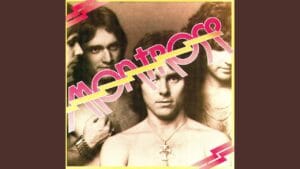Ronald Douglas Montrose, born November 29, 1947, in San Francisco, California, was an American guitarist whose powerful precision redefined 1970s hard rock. Montrose successfully led two distinct careers: as the driving force behind his self-titled band, Montrose, and as one of the era’s most reliable and innovative session musicians.
Unlike many of his contemporaries, Montrose rejected the loose, blues-driven approach common in the early 1970s. He instead favored clean execution, structured riffs, and meticulously composed solos—a disciplined philosophy that established him as a technical trailblazer.
Early Influences
Montrose’s musical foundation was a powerful blend of raw rock energy and jazz-informed discipline. He was grounded in rhythm and attitude by early rock and roll legends like Elvis Presley and Chuck Berry. However, his study of jazz guitarists like Johnny Smith introduced harmonic structure and phrasing control, elements that defined his signature style. This fusion of 1960s spontaneity and calculated architecture served as a bridge between early blues-rock and the technical precision that would define late 1970s hard rock and early metal.
Career Milestones
The Launchpad (1973)
Montrose co-founded his namesake band, releasing their self-titled debut, Montrose (1973), featuring Sammy Hagar on vocals. With tracks like “Bad Motor Scooter” and “Space Station #5,” the album became a cornerstone of American hard rock—tight, aggressive, and precision-built. It was a crucial influence on the burgeoning California hard rock scene that followed.
Session Mastery
Montrose’s reputation as a studio professional was ironclad. He played on Van Morrison’s Tupelo Honey (1971), Boz Scaggs’ Slow Dancer (1974), and contributed the iconic, driving riff to Edgar Winter’s “Frankenstein” (1972). His ability to elevate arrangements with clean, purposeful guitar work made him a go-to player across diverse genres.
Instrumental Expansion
After the original band split, Montrose shifted focus, releasing the instrumental album Open Fire (1978). This project fused rock intensity with a high level of jazz-fusion sophistication, showcasing his compositional depth and technical ability far beyond traditional rock frameworks.
Later Years
He reformed Montrose several times and continued touring, always upholding his reputation for disciplined musicianship and tonal precision until his death in 2012.
Playing Style & Technique
Montrose’s playing style blended raw strength with absolute control. His use of alternate picking, tight rhythmic control, and structured soloing distinguished him from improvisation-heavy contemporaries. He was renowned for delivering clean, high-speed riffs with tight rhythmic accuracy.
His solos were not flashy displays of ego, but rather carefully structured compositions that prioritized musical purpose and clarity. Whether performing hard rock or fusion, he preserved a balance that demonstrated a wide stylistic range without sacrificing musical intent.
Signature Gear and Tone
Montrose’s tone was built on simplicity and control. He favored Gibson Les Pauls and Fender Stratocasters. His aggressive hard rock tone was largely achieved using Marshall amplifiers, specifically a Marshall JMP head, often paired with Fender amps for clean tones and added dimension. He avoided heavy modulation or time-based effects. His key signature effect was the Maestro Fuzz-Tone, a rare early distortion unit, which he used sparingly but effectively to create his distinctive, tightly focused grit, relying on overdrive and natural amp reverb for the rest of his sound. His gear choices—simple, powerful amps and minimal effects—reflected his philosophy: let the hands and arrangement do the work, not the pedals.
Legacy
Ronnie Montrose is recognized as a quiet but fundamental influence on the evolution of American hard rock, metal, and shred guitar. His insistence on tight arrangements and precision playing set a new standard for professionalism in rock performance. Bands such as Iron Maiden and Def Leppard cite the Montrose (1973) debut as a crucial inspiration, and his body of session work remains a study in reliability and masterful tone discipline.
Final Reflection
Montrose embodied the idea of “power through precision.” His music demonstrated that rock intensity could coexist with intellectual craftsmanship. He once summarized his approach perfectly:
“The ability to step into a situation where you are not only going to be able to follow the existing arrangement and be able to be creative, but also to bring in your own sensibilities to help the music.” — Ronnie Montrose
That philosophy—discipline in service of creativity—continues to define his enduring reputation among musicians and producers.
Essential Listening
Explore Ronnie Montrose’s guitar legacy through two distinct lenses: the high-energy precision of his live performances and the compositional mastery of his studio recordings.
Live Performances
Ronnie Montrose ignites “Bad Motor Scooter” live on The Midnight Special with slide-driven riffs, stage charisma, and tight execution—capturing the raw power of Montrose’s hard...
Ronnie Montrose ignites “Bad Motor Scooter” live on The Midnight Special with slide-driven riffs, stage...
Ronnie Montrose anchors "Good Rockin' tonight" with a simple, precise, and overdriven riff. He moves away from improvisation, relying on controlled rhythmic patterns and a...
Ronnie Montrose anchors "Good Rockin' tonight" with a simple, precise, and overdriven riff. He moves...
Studio Recordings
Montrose’s “Space Station No.5” blends cosmic atmosphere with hard rock precision, showcasing Ronnie Montrose’s layered guitar work and the band’s tight execution on their groundbreaking...
Montrose’s “Space Station No.5” blends cosmic atmosphere with hard rock precision, showcasing Ronnie Montrose’s layered...
“Rock Candy” is Montrose’s studio-built hard rock anthem—massive groove, razor-sharp riffs, and soaring vocals combine in a tightly engineered blast that defined the sound of...
“Rock Candy” is Montrose’s studio-built hard rock anthem—massive groove, razor-sharp riffs, and soaring vocals combine...




